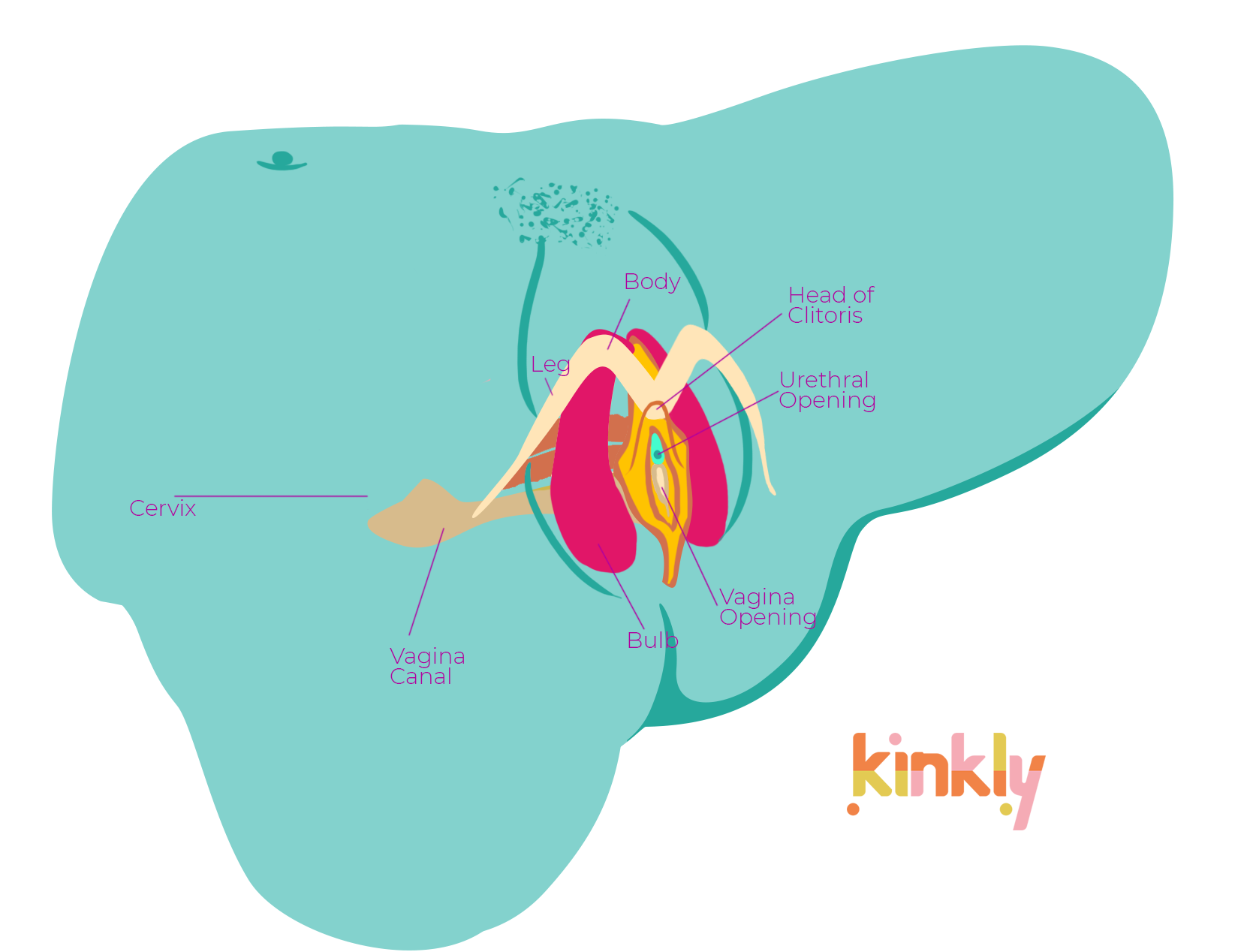Vestibular bulbs are long masses of erectile tissue found inside and next to the clitoris and near the urethra, urethral sponge and vagina. They are attached to the perineal membrane and urethra. Muscles lay over the top of them.
Vestibular bulbs are sometimes called the bulbs of the vestibule, vestibulovaginal bulbs, and clitoral bulbs.

More About Vestibular Bulbs
The vestibular bulbs are the female equivalent of the bulb of penis and part of the corpus cavernosum urethrae. Unlike people with penises, who have a single, solid mass of erectile tissue, the vaginal opening splits the erectile tissue into two halves.
The vestibular bulbs are believed to relate closely to the clitoris. During arousal, the vestibular bulbs fill with blood. This cuffs the opening of the vagina, which makes the vulva swell up to two or three times its usual thickness. This also puts pressure on the internal clitoris, creating pleasure upon arousal. The spasm of orgasm releases the blood from the bulbs. If orgasm doesn't occur, blood leaves the area over a matter of hours.
The muscles that lay over the top of the vestibular bulbs contract during orgasm. These contractions might feel like they occur in the vagina or even the G-spot. However, they always occur near the vestibular bulbs.
Unlike the bulb of the penis, the vestibular bulbs do not need time to recover between orgasm. Multiple orgasms can be experienced with prolonged stimulation.



